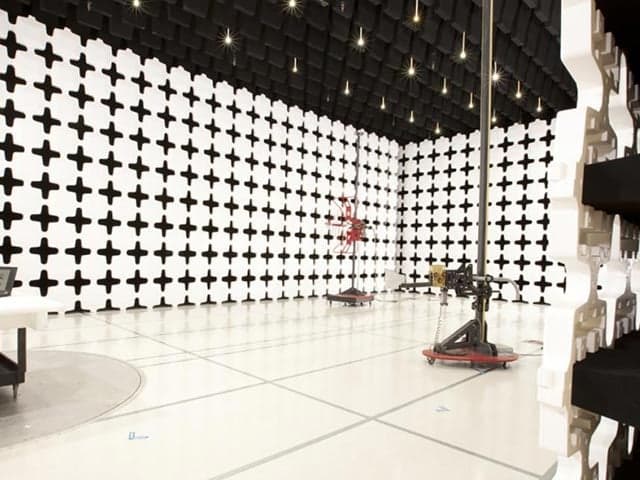Overview of Radio Compliance
This article by Michael Derby explores global radio compliance requirements, including EU RED, UKCA, and FCC frameworks. It guides manufacturers through key testing, certification, and documentation steps to ensure seamless market access for wireless and IoT products, supporting faster, compliant launches in competitive technology sectors.
As testing and approval of radio modules become applicable to an increasing number of products, it is prudent for manufacturers to understand how the route to compliance differs across the globe and how this may affect a product reaching its intended markets.
Taking the first step in separating testing from approval
The first step is to learn to separate testing from approvals. Whilst testing a product is a significant step in the journey towards a product being ready to market, it's not simply about passing or failing the tests. Just because a product has been approved, it doesn't mean it's going to pass all the tests. And just because a radio product has passed all the tests, it doesn't mean it is approved.
They may be similar, but they are not the same.
If you buy in a certified radio module or a module with a CE mark on it, the module is approved and therefore could be placed on the market. However, if you then insert it into your product, testing will still be required. Similarly, if you buy in a pre-approved radio product but then don’t use it in the way it has been intended, then it may also require re-testing.
Understanding the route to radio compliance in the European Union
In the European Union, the Radio Equipment Directive 2014/53/EU (RED) establishes the essential requirements for safety, EMC compatibility, and efficient use of the radio spectrum for devices
containing radio or wireless components. Known as the RED, it applies to any product which includes a radio device with a frequency of up to 3000 gigahertz.
The RED is a trade document to enable radio products to be sold across the EU, it is not a technical document. A technical assessment is, however, necessary to meet the RED’s requirements, just one of the many responsibilities of the manufacturer.
Part of the technical essential requirements is to assess product safety including RF exposure, EMC performance including EMC emissions and immunity, as well as transmitter and receiver radio performance. There are also additional ‘other categories’ which address specific issues. Some of these, relating to cyber security and fraud, will become enabled from August 2024.
It is important to note that there's no certification but rather a single authorization route through a declaration of conformity (DoC). The manufacturer is responsible for drawing up and signing the declaration of conformity and, by doing so, assumes responsibility for the compliance of the product.
Whilst it is easy to assume that the manufacturer is the party that has designed and made the product, legally it is the party whose name is on the product. If you take somebody else's product and rebrand it with your own name, you legally become the manufacturer and must sign the DoC.
From a UK perspective, when shipping a product to the EU, it is the EU-based importer who takes responsibility for placing it on the EU market and who is required to place their contact details on the product.
Assessing a product for the RED
When assessing a product for the RED, a safety assessment is required to cover the different aspects of safety such as product safety, acoustic safety, light safety, and RF exposure. If the product is also classified as a machine or a piece of medical equipment, it will need to be assessed to the other applicable directives. This means that you will ultimately have a single declaration of conformity which lists all the applicable directives and states that the product meets them.
Placing a product on the EU market
When placing a product on the market, it is the individual product that is CE marked and the DoC accompanies that single product. If the test standard or the requirements change, any products in the shops won’t need to be recalled as they are already on the market. However, any that haven't left the factory yet are not on the market and would need to be reassessed. There’s no grandfathering.
Frequently Asked Questions about radio compliance in Europe
1. What is the risk assessment?
The risk assessment is the analysis of risks that the manufacturer must perform and must be available to show to a market surveillance authority or a Notified Body if requested. Essentially, it is the first document you open when you're planning a product and the last document you close when you place it on the market.
It is worth noting that the EU consists of 27 member states and the rules may vary from country to country. Frequency allocation tables and rules are not identical across all the states. You therefore may not be allowed to sell a product across all 27 states if it transmits on frequency bands that are not permitted or operates in a particular way that's not lawful in certain states.
2. Do I need to test for the radio equipment directive?
There's nothing in the RED that says you must test, rather it says you must assess for radio performance, EMC, and safety. The reason everybody tests is because it's the easiest and most risk-free way of demonstrating compliance and providing the evidence required that you have met your legal requirements.
3. What does presumption of conformity mean?
If you test to a harmonized standard, this will give you a presumption of conformity. You can use a non-harmonized standard, but it won’t give you presumption of conformity.
Essentially, if you've tested to a harmonized standard and have presumption of conformity, it's somebody else's responsibility to prove that your product is not permissible. If the standard isn't harmonized, you will need to prove why you chose that non-harmonized standard. Remember, however, the DoC is to the directive, not to the standards. The DoC shows that you have met the requirements whilst the standards and the tests are the tools to get there.
4. Do I need a notified body EU-type examination certificate?
If you can use harmonized standards for your radio product, then you do not need a notified body EU-type examination certificate. If you are unable to fully apply harmonized standards, then you must have a notified body certificate.
A notified body, such as Element, ensures that the manufacturer has met all their legislative requirements, including testing, inspection, and certification. As part of this process, Element will review a product’s technical documentation and issue an EU-type examination certificate (TEC) to confirm that the product meets the essential requirements within the scope of the relevant directive. This enables the Declaration of Conformity to be drawn up and signed prior to the product being placed on the market. However, the certificate issued to support the DoC is an examination certificate and does not in itself give product approval.
For safety and EMC requirements, whilst it’s not mandatory to have a notified body certificate, many manufacturers prefer to obtain one for confirmation that they have applied the right standards.
It is important to note that if the standards change, you will need to reassess your product. This will mean checking the changes in the standard and assessing how these may affect your product but may not necessarily mean having to retest.
5. How long does the manufacturer need to keep the technical documentation?
The technical documentation that you keep for your product describes the compliance route you have taken and is the evidence you will be required to show to market surveillance if requested. This needs to be kept on file for ten years after you've placed the product on the market.
Understanding the differences in the route to radio compliance in the UK
The UK has the UKCA Mark instead of the CE Mark. Whilst the technical assessment requirements are broadly the same, it is important to be aware that there are differences. For example, the UK has different spectrum frequency bands than the EU for many products. The UK also has its own list of UK-designated standards and UK-approved bodies, which are the equivalent of an EU-notified body. If you haven't used a UK-designated standard, then you would need to use a UK-approved body for the UK market and an EU-notified body for the EU. You will also need both a UK DoC and an EU DoC for your product.
These differences between the EU and the UK mean that you now have two lists of standards for which you will need to keep up to date with any future changes.
Learn more about UKCA marking.
The USA
The USA has FCC rules and regulations which apply to any electronic or electrical device or radio equipment. The FCC covers all commercial, industrial, and domestic use products, as well as emergency services, but excludes military equipment.
In the USA, there are two authorization routes: a supplier’s declaration of Conformity (sDoC) for electronics and many radio receivers, and certification which is more typically for transmitters. There is also a list of exempt products that are in the scope of the FCC rules but don't require authorization. For example, any radio receivers that are below 30 megahertz or above 960 megahertz receivers such as GPS receivers.
The scope of the FCC assessment includes testing for EMC emissions, transmitter performance, and RF exposure. For the sDoC, you must perform the tests to the exact standard that the FCC states, but it is a procedure to follow rather than a final document as it is in Europe and the UK. For the certification route, you must also test your product in the precise way defined in the standard or your authorization is void. In addition, you must submit all your documents to a certification body to review and certify the product.
All FCC certifications are performed by a TCB, a telecommunications certification body. TCBs can certify products and must carry out market surveillance testing. Unlike the UK and Europe, FCC product authorization is a one-time thing. If the test standard changes after a product’s certification, it doesn't matter. Only on very rare occasions will the FCC change the rules and will always inform the industry accordingly.
For sDoC testing, you don't need an accredited or listed laboratory, but it must have a test facility that meets the standard. For certification testing, the laboratory must be accredited, and it must be listed on the FCC website for that type of testing.
Following certification, the manufacturer is required to label the product with a traceable reference number called an FCC ID number and keep a sample available for any requests from market surveillance. If you want to rebrand somebody else's product, you can transfer their certification into your name through a process known as a change in ID. In Canada, this is called a multiple listing.
If you want to change a product that is certified, for sDoC products you just need to retest them but for certified products, you need to go through a process known as a permissive change. This is a change that is permitted within the certification. If you make any changes to the transmitter hardware, it must have a new certification and a new certification number.
To learn more about FCC Certification for the United States, please click here.
Canada
For Canada equipment authorization (ISED), you need to use a Canadian certification body in the way that you need to use a TCB for the USA. Element is approved to provide manufacturers with both TCB and ISED services. Once you obtain Canadian certification and your product is certified, you are expected to continue to keep up with any changes in the standards.
To learn more about FCC and ISED certification requirements to expedite your route to market, please click here.
Using a radio module
If a radio module manufacturer wants to sell their module in the EU, it will need a CE mark like any other piece of radio equipment. If you then put that CE-marked radio module into your own CE-marked product, you've created a whole new final product that will need its own CE mark.
In the USA and Canada, the FCC and ISED have established a modular approvals process where it is possible to obtain modular approval, a type of certification specific to radio modules that are intended to be installed into other equipment. However, it is not mandatory for the module manufacturer to have their device certified, enabling modules to be sold to installers with or without certification. It is also possible to bypass the modular approval route and certify a radio module as a standard radio transmitter, but the device would then only be certified for use as a standalone radio.
How Element can help
Element can support you throughout the entire radio compliance testing process as your Global Market Access service partner to help you navigate complex regulations and get your products to market quickly and efficiently. From generating bespoke test plans and performing pre-compliance investigations through to full formal conformance testing, we will ensure you have all the regulatory and contractual compliance evidence required of you. To speak to an Element expert about the testing and approvals process for your product, please contact us.

Electrical Safety Testing and Certification Services
Accelerate your electrical product's journey to market with Element's comprehensive Electrical Safety Testing and Certification services. Navigate certification requirements efficiently, reducing time and costs while maintaining rigorous safety standards.

Electromagnetic Compatibility (EMC) Testing & Electromagnetic Interference (EMI) Testing & Certification
Element provides accredited EMC and EMI testing and certification services, helping businesses meet regulatory requirements, reduce costly redesigns, and bring products to market faster through expert compliance support.

Wireless Device Testing & Certification
Get your wireless devices to market faster with Element's accredited testing services. Expert guidance through compliance, certification and global approvals for all wireless technologies.
Overview of Radio Compliance - RED, UKCA, FCC, ISED
Watch Michael Derby explain how the route to compliance varies globally for testing and approvals of radio modules and how this can impact a product's market access.

